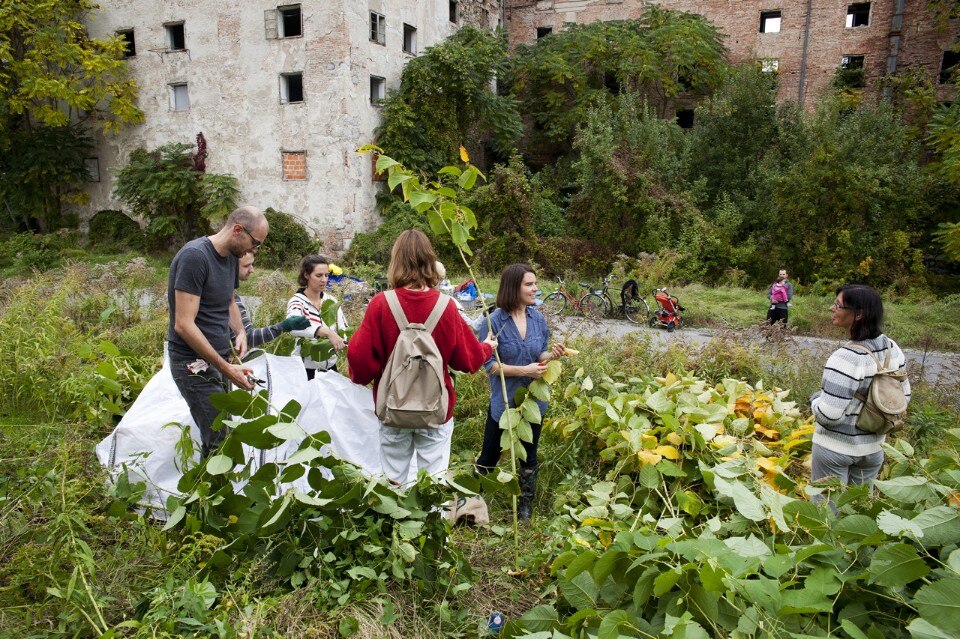– Solar can provide a productive and environmentally friendly use for defunct golf courses, characterized by expansive land mass, high sun exposure, and a low concentration of shade trees.
– Resulting from a collaboration between Nienke and Xandra van der Eijk the project Natural Seawed Dye is a dye process with colours obtained from seaweed that can be fixed with salt with no need for water.
– Re-generacija collective proposes to use invasive plants as a local source of cellulose in the future, the process has been showed at MAO – Museum of Architecture and Design in Lublijana.
– Paperscapes is the last result from Dear Human exploration into paper-made objects that function as furniture, lighting, and wall treatments thanks to a sculptural approach.
– On the lower slopes of Mount Kilimanjaro Patricia Erimescu built a library without any electric tools, using only locally traditional methods and innovating them step by step, with the active participation of the inhabitants of the village and the parents.
– The Mile, a design for a one-mile high vertical park and observation deck will be the world’s highest construction. Carlo Ratti Associati presented it at Cannes’ MIPIM 2016.
– One of the latest transformations in Doha, Qatar, is the opening of a new park stretching inland of West Bay, that exceptional sequence of public spaces structuring the city’s presence on the sea.
– Installed at the foot of Mt Blanc, this living module equipped with all the essentials required to live well is a way of showing live on the Internet over a 12-month period how to live in a zero-energy house.
– In the Dutch city of Nijmegen Frank Marcus conceived a pavilion to host beehives as to connected oval spaces, shaped as the atomy of a body of an insect.


